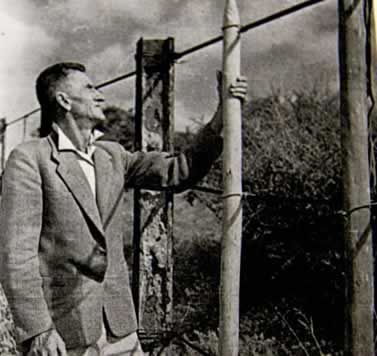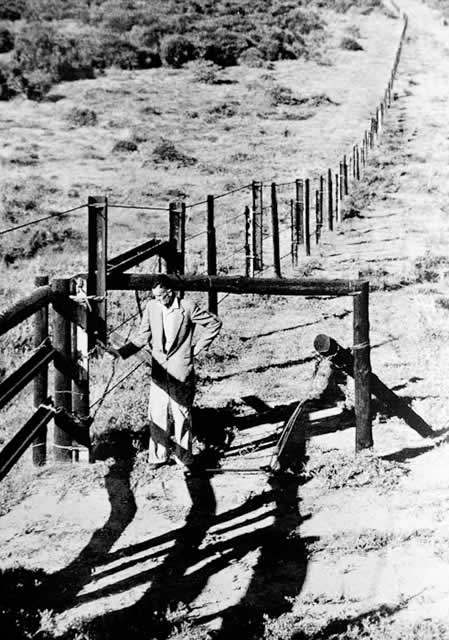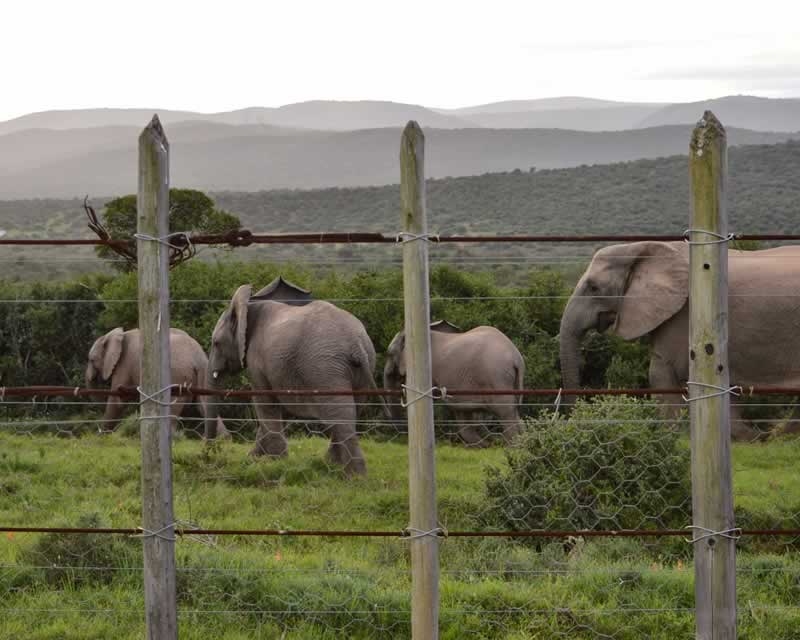Addo Elephant Park - Early Days
An early problem in the park was the effort involved in keeping the elephant within their boundaries and away from the property of vengeful farmers. Having been hunted almost to extinction, the Addo elephants had the reputation of being the most dangerous in the world. An electrified fence failed to contain them. Farmers and others living near the outskirts of the park suffered damage and claimed large sums in compensation. There were fatal encounters and amongst the victims were farmers, hunters, a ranger and a woman who blundered into the hard of elephant while making her way home at night.
There is also they story of a famer who was riding a wagon-load of oats into Port Elizabeth when he found he was being followed by head of elephants. Becoming desperate as they gained on him he threw a bale of oats on to they roadway. This delayed them only a short while, and soon they were on his trail again. Another bale tumbled on the road. There was little of the farmer’s oats crop left when passed beyond the limits of elephant territory, but the bales had bought him his life.
The park’s first warden, Harold Trollope started putting out hay, pumpkins, pineapples and oranges in attempt to keep the elephants within the park’s boundary. The plan worked, and soon the elephants learnt to expect regular evening feed. With the completion of an elephant-proof fence in 1954, they were safe from the farmers’ guns, but by this time the feeding ritual had become so popular that the practice was continued.
Finally in 1954, Graham Armstrong (the park manager at the time) developed an elephant-proof fence constructed using tram rails and lift cables and an area of 2 270 hectares was fenced in. There were 22 elephant in the park at the time. This Armstrong fence, named after its developer, is still used around the park today. (Information obtained from the Sanparks Website).
Each day a truck full of oranges was driven to a point close to a viewing ramp. The driver steered in tight circles, pursued by the elephants as oranges rolled off the in all directions. This Intention was good but the outcome of this feeding ritual was almost disastrous: the elephants became addicted to the citrus, and during the winter feeding season, they dared not to move away from the rest camp area they missed the next feed. The result: a very small area of vegetation had to support some 75 Per cent of the herd. Plant densities were drastically reduced by over-gazing, and the behavior of the elephant was affected: signs of stress and aggression increased as they competed for oranges which in 1976, were being fed to rate of about 30 tons a month.
Animals were being injured and at least one calf was killed, in the scramble for food, so the show was stopped in 1978. Today the visitors may not bring and citrus fruits into the park, whether or not for their own consumption. An early problem in the park was the effort involved in keeping the elephant within their boundaries and away from the property of vengeful farmers. Having been hunted almost to extinction, the Addo elephants had the reputation of being the most dangerous in the world. An electrified fence failed to contain them. Farmers and others living near the outskirts of the park suffered damage and claimed large sums in compensation. There were fatal encounters and amongst the victims were farmers, hunters, a ranger and a woman who blundered into the hard of elephant while making her way home at night.
There is also they story of a famer who was riding a wagon-load of oats into Port Elizabeth when he found he was being followed by head of elephants. Becoming desperate as they gained on him he threw a bale of oats on to they roadway. This delayed them only a short while, and soon they were on his trail again. Another bale tumbled on the road. There was little of the farmer’s oats crop left when passed beyond the limits of elephant territory, but the bales had bought him his life.
The park’s first warden, Harold Trollope started putting out hay, pumpkins, pineapples and oranges in attempt to keep the elephants within the park’s boundary. The plan worked, and soon the elephants learnt to expect regular evening feed. With the completion of an elephant-proof fence in 1954, they were safe from the farmers’ guns, but by this time the feeding ritual had become so popular that the practice was continued.
Finally in 1954, Graham Armstrong (the park manager at the time) developed an elephant-proof fence constructed using tram rails and lift cables and an area of 2 270 hectares was fenced in. There were 22 elephant in the park at the time. This Armstrong fence, named after its developer, is still used around the park today. (Information obtained from the Sanparks Website).
Each day a truck full of oranges was driven to a point close to a viewing ramp. The driver steered in tight circles, pursued by the elephants as oranges rolled off the in all directions. This Intention was good but the outcome of this feeding ritual was almost disastrous: the elephants became addicted to the citrus, and during the winter feeding season, they dared not to move away from the rest camp area they missed the next feed. The result: a very small area of vegetation had to support some 75 Per cent of the herd. Plant densities were drastically reduced by over-gazing, and the behavior of the elephant was affected: signs of stress and aggression increased as they competed for oranges which in 1976, were being fed to rate of about 30 tons a month.
Animals were being injured and at least one calf was killed, in the scramble for food, so the show was stopped in 1978. Today the visitors may not bring and citrus fruits into the park, whether or not for their own consumption.


